Popular melon “Collective Farmer”: calorie content, benefits and harm to the body
Melon is defined as a pseudoberry from the pumpkin family and the cucumber genus. The length of the fruits of some southern varieties can reach 2 m, and the weight of individual specimens reaches 20 kg.
However, such giants cannot be grown in our climate, and there are only two popular varieties. We will talk about one of them - the Kolkhoznitsa melon, its distinctive features and beneficial properties - in this article.
Description of the variety Kolkhoznitsa
Melon Kolkhoznitsa is a favorite variety of gardeners in almost all regions of our country (with the exception of the North and North-West). It began to be grown back in 1939.
Mid-season Kolkhoznitsa produces a sweet harvest even in short and not too warm summers. Its small fruits (weighing from 0.7 to 1.4 kg) ripen in 78-96 days. The shape is spherical, with an average diameter of 15-20 cm.
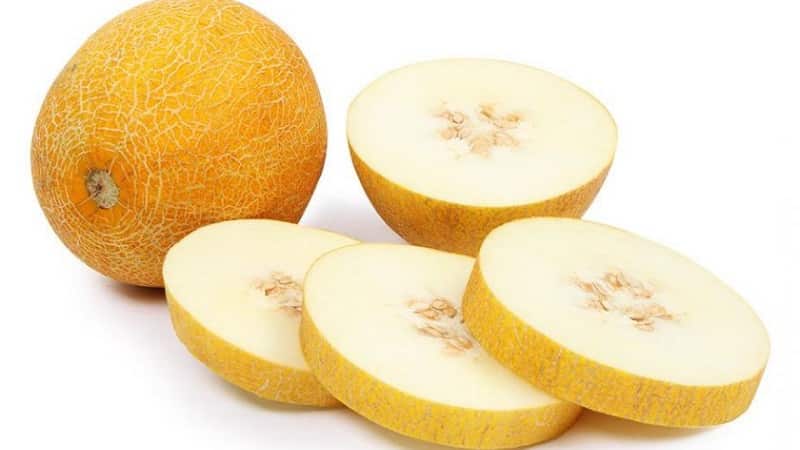
The peel is medium thick, bright yellow, but can be orange with a green tint. The surface of the peel is usually smooth, sometimes covered with a large mesh.
Fruits grown in warm regions have very sweet flesh.. However, in cool weather or shade, melons accumulate fewer sugars.
Chemical composition, vitamins
The product contains vitamins A, E, C, PP, B vitamins, beta-carotene. A few slices of melon cover the daily need for potassium, silicon, and also supply the body with sodium, magnesium, phosphorus, iodine, iron, manganese, calcium and zinc.
100 g of juicy delicacy contains 0.59 g of protein, 0.22 g of fat, 7.40 g of carbohydrates.
Calorie content
Kolkhoznitsa is one of the lowest calorie and dietary varieties melon culture.
The calorie content of Kolkhoznitsa melon varies from 31 to 35 calories per 100 g, depending on the sugar content.
Beneficial features
Melon fruits are not only tasty and aromatic, but also good for health.
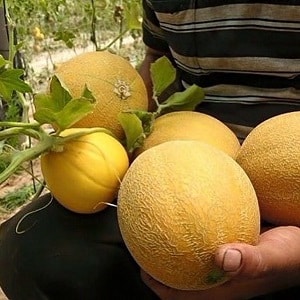 That's just several reasons why melon should definitely be included in your diet:
That's just several reasons why melon should definitely be included in your diet:
- the sweet fruit perfectly quenches hunger and thirst;
- Regular consumption of melon improves digestion, cleanses the intestines and prevents constipation;
- the vitamin composition strengthens the immune system, helps restore hair and nails, improve memory;
- normalizes the nervous system, helps fight stress;
- ideal for combating excess weight;
- promotes recovery from diseases of the liver and cardiovascular system.
The best time to enjoy melon is between meals. - so it will bring maximum benefit.
Other melon varieties:
How to grow melon variety Kolkhoznitsa
In order to get a ripe harvest from the Kolkhoznitsa in August, sowing begins no later than first half of May. Melon seeds can be planted directly in the ground (in the southern regions) or as seedlings. With the seedling method, sowing begins in April.
Suitable temperature for the emergence of sprouts and further growth of the crop: +25⁰C… +30⁰C.
The watering schedule depends on the age of the plant and weather conditions.. During the period of active growth, water frequently so that the bed is always moist, and grown plants - once a week.
It is recommended to feed melons every 14 days.. The first feeding is two weeks after germination.
Under film cover (in a greenhouse), pollination of flowers has to be done manually.
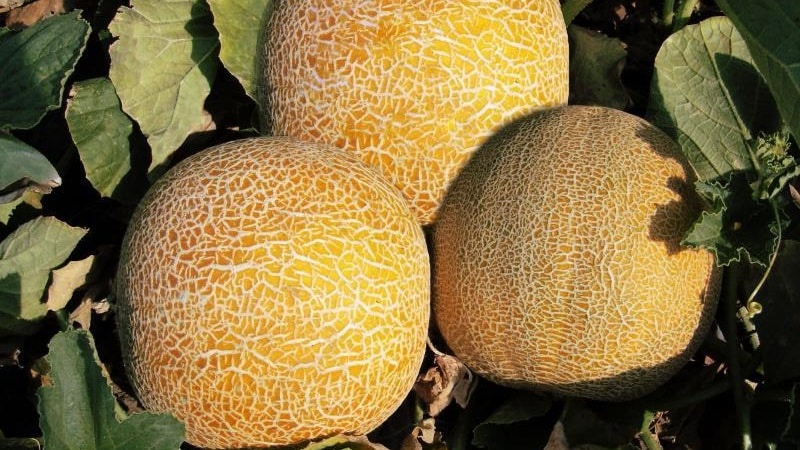
When growing a collective farmer, the most important thing is:
- plant in time so that the crop has time to ripen before the cold snap;
- protect against diseases by preventive spraying;
- form bushes in time, normalize the harvest;
- In cool weather, cover plants.
How to choose a ripe and sweet Kolkhoznitsa in a store or market
Choosing a juicy and aromatic product is quite simple, if you know what to look for.
Important! It is not recommended to buy melon near highways and in tents near busy roads, such goods accumulate exhaust gases.
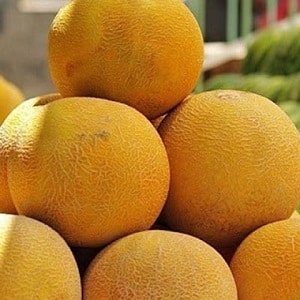 To begin with, the selected copy is picked up and inspect for cracks, dark spots and dents. Then they check whether the fruit has aroma. If there is a sweet aroma (vanilla, pear, honey), then the melon is ripe, if the smell is grassy, then it is not.
To begin with, the selected copy is picked up and inspect for cracks, dark spots and dents. Then they check whether the fruit has aroma. If there is a sweet aroma (vanilla, pear, honey), then the melon is ripe, if the smell is grassy, then it is not.
It also makes sense to pat the peel - mature specimen the sound will be dull.
To find out whether the product is overripe, press on it with your hand. If the peel is slightly springy, and even small dents do not remain on it by hand, then the vegetable is not overripe.
It is rational to choose medium-sized fruits, since they are most likely not stuffed with chemicals (unlike the largest Kolkhoz women). For the same reason, you should not buy melons before August.
Read also:
Melon Kolkhoznitsa for weight loss
The ripening period of melons - August and September - is the best time to become slimmer.
It is recommended to have 1 fasting day per week.. To do this, eat 0.3-0.5 kg of melon pulp 3-4 times a day. If you have such days for several weeks in a row, then in just a month 6 kg of unnecessary weight will disappear.
Melon of this variety great for a short mono-diet. Additionally, it helps to refrain from high-calorie and unhealthy desserts.
For the sake of maintaining health It is recommended to stick to a mono-diet for one or two days. Longer it becomes dangerous - a deficiency of proteins and fats occurs in the body.
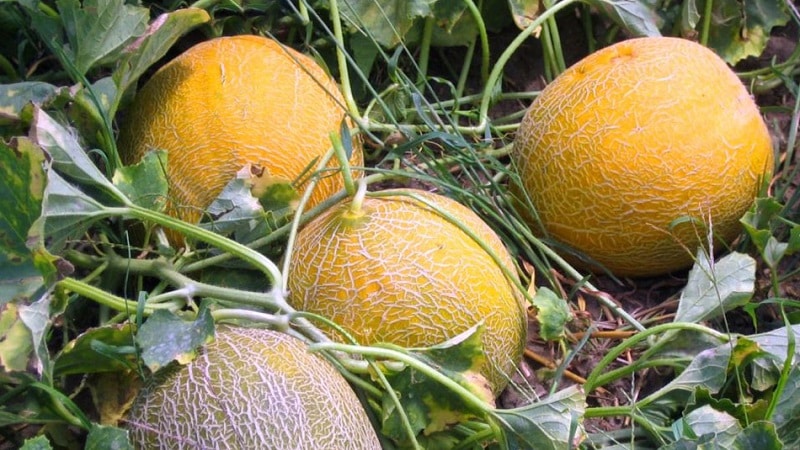
Eat 1.5 kg of sweet pulp per day in 6 doses, also drink 1-2 liters of water and 0.5 liters of green tea (without sugar).
Important! In between eating the fragrant false berry, you can drink water or tea. At the same time, it is worth remembering the diuretic effect and not eating melon immediately before bed.
Melon diet relatively economical, does not harm health and allows you to lose weight by 1 kg per day. In addition to the benefits of losing weight, it has a good effect on many vital functions of the body.
Harm and contraindications
Eating melon as a dessert after a meal may harm the body.. This product is incompatible with other dishes, especially milk, honey and alcohol.
You can eat melons only two hours after the main meal. If this rule is not followed, a person may experience nausea, diarrhea and flatulence.
Attention! You should not eat a lot of melon pulp if you have gastrointestinal diseases. For diabetes mellitus, consuming 100-200 g of melon per day is considered safe. Doctors prohibit a melon diet for breastfeeding women to prevent bowel problems in the baby.
Conclusion
In the absence of contraindications, you can safely feast on the tender melon fruits starting in August. Melon Kolkhoznitsa will perfectly help people who dream of losing weight safely and easily.
If you eat melon in small portions 2 hours after eating, the fruits will only be beneficial.
Thanks for the recommendations.
Please come again.